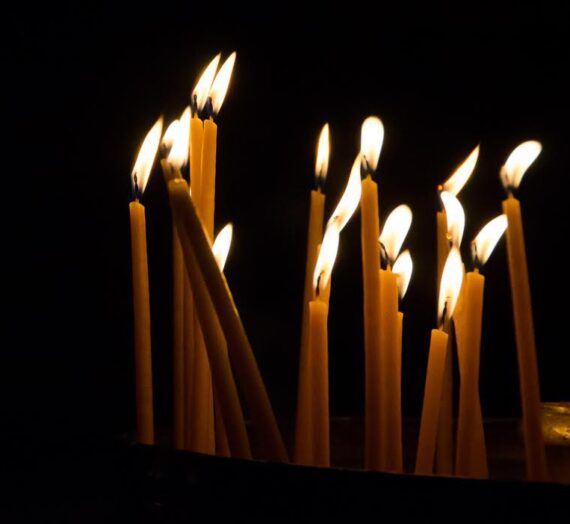The multitude tried to silence the blind man’s cries for mercy as they passed by in pursuit of Jesus. Their desire to follow Jesus got in the way of their ability to see the needs of the one. Cynthia and Susan discuss lessons they’re learning about the importance of stopping, really seeing people, and asking what they need.

Episode Summary:
- This episode is based on a lesson Susan taught in Relief Society. It is centered on the scriptures in Luke 18:35-43 about the blind man.
- This story pits a marginalized person against a multitude of Jesus followers. (The multitude is not the hero of the story.)
- The multitude tries to silence the man, but he persists and Jesus hears him.
- Jesus stops and asks what the man needs, the man is clear in stating what he needs, Jesus heals him (through his faith)
- The man and the multitude both give praise, meaning all people were lifted.
- “Christ did not just speak about love, He showed it each day of His life. He did not remove Himself from the crowd. Being amidst the people, Jesus reached out to the one. He rescued the lost. He didn’t just teach a class about reaching out in love and then delegate the actual work to others, He not only taught but also showed us how to “succor the weak, lift up the hands which hang down, and strengthen the feeble knees. Christ knows how to minister to others perfectly. When the Savior stretches out His hands, those He touches are uplifted and become greater, stronger, and better people as a result.” —Elder Uchtdorf, You Are My Hands 2010
- The essence of Jesus’ service to others, as recorded in the scriptures, is to lift them. He patiently enlarges the circle.
- With this lesson, Susan was prompted to take it to a place she didn’t want to take it. But she was impressed by the Spirit (and the support of the RS president) to do it anyway. Susan has tried to always make space for people at church. She knows all of God’s children fit, but that isn’t always reflected in our church experiences. This has been magnified in regard to our LGBTQ brothers and sisters. Parents of LGBT children are learning lessons about love that a lot of people without LGBTQ children aren’t having to learn. One person, without children, shared their love and gave space to the challenges parents of LGTBQ parents were feeling. Susan realized she had been part of the “multitude following Jesus” and was not reaching out to lift those that were suffering. Jesus would not pass by and not lift those that are suffering. Following Him would require that we also stop, offer our full attention, offer to help, etc. We rise together. When one is helped, we are all lifted and can praise.
- When others are suffering and we don’t understand their suffering, we can follow the template of saying, “I see you, I’m sorry, I mourn with you and I love you.” That is at least a starting point. Christ always stood there with His arms out-stretched in love while the people around Him often made it more difficult.
- Using humility to make amends or acknowledge a problem is so Christlike and healing.
- Are we both the blind man as well as the multitude in this story?
- “I realized that just as I sat in church with my doubt, there were those sitting in church with their sexuality, their race, their gender, their depression, their addictions, their fears, their pasts, their infertility, their eating disorder, their diagnosis, their missed rent, their mess of a marriage, their sins, their shame.”
—Rachel Held Evans, Searching for Sunday
- Cynthia felt like an ‘other’ when she and her husband first found out they would struggle with infertility. She remembers yelling at God and having so many questions that arose. Having felt suffering in her specific way, she learned to see and acknowledge the suffering of others.
- The above list could describe most Relief Society classes. All of these issues could affect someone in the room, and yet, we don’t feel comfortable speaking up and saying, “Where does this leave me? How do I fit in?” The answer should be right here with us in church. That should be the goal. We hold up the ideal of how things should be, but that doesn’t often make room for where people fall in relation to that ideal.
- Why do we “shush” people at church? Often because people come to church and don’t want to feel uncomfortable. So we try to stop conversations that bring discomfort. There is a need for people to make a consistent effort to go first and create a safe space for people to step into.
- If there is ONE thing we should be doing in the church, shouldn’t it be this? Shouldn’t it be mourning with others and bearing their burdens? We should all be able to set down our burdens and pick others up for people. It should be a symbiotic relationship.
- Richard Rohr tells a story about a woman who didn’t know what to do because she felt she should go a certain way but her church was staying on a different path. She was describing the dissonance we often can feel. He explained that so often in our churches, we either go into fight or flight mode. The conservative people in the church go into flight mode. They turn away from the pain that they see going on. The liberal people go into fight mode saying the pope needs to change, the bishops need to change. We’re so dualistic. He said he was there to tell us of a third way, the way of wisdom, a contemplative mode. It doesn’t have to be one or the other—fight or flight—but there is a third way.
- But what does that even mean? Possibly what we have talked about. To come into a room, set down what we have, let others set down what they have and to actually SEE each other, see the actual body of Christ. The gospel, as we are called to live it, is about the people we are with in the room. We wouldn’t want to actually fight the people in the room or flee from them. We need to see the people and get past those other things that get in the way.
- “We can be sufficiently creative and sufficiently kind that we will draw circle upon circle upon circle, bringing each other in, leaving no one out, joining, linking, enlarging until the pattern of the whole human family, seen through the eye of God, is complete.” —Carol Lynn Pearson, Dec. 7 2019 at the Encircle Summit
- Circles are beautiful imagery. When Christ is at the center and everything revolves around Him, we can endlessly enlarge the circle. Love radiating forever outward.
- What can we do now in the space that we occupy to make things better?



